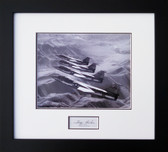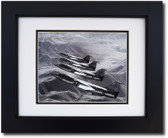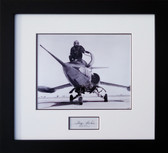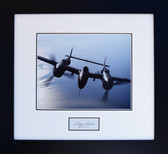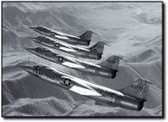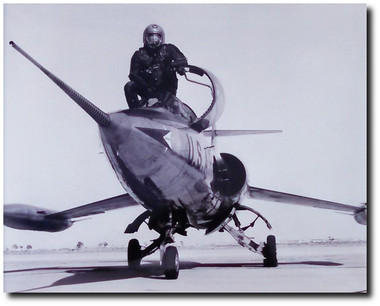 Loading... Please wait...
Loading... Please wait...- Home
- Aviation Gifts Under $50
- Unframed - Aviation Photos
- F-104 With Tony Levier - Photo Only
Categories
F-104 With Tony Levier - Photo Only
Product Description
F-104 With Tony Levier
Dimensions: 8" x 10"
Plane Type: F-104 Starfighter
The Lockheed XF-104 was a single-engine, high-performance, supersonic interceptor prototype for a United States Air Force (USAF) series of lightweight and simple fighters. First flight of the XF-104 took place on February 28th 1954 by test pilot Tony Levier. The fourth addition to the "Century Series", the F-104 was the smallest, lightest, and fastest member of this famous family of supersonic aircraft. Conceived with the same design philosophy as today's F-16, the Starfighter was the first American tactical fighter to break tradition by offering a smaller, simpler solution to the inherent problems of Mach 2 flight. The result was a 55 ft. long, 20,000 lb. aircraft with a mere 22ft. wingspan that could out-climb and out-run any airplane in the world. F-104s established many world speed and altitude records including a closed course run of 1,405 mph set in 1958, and a zoom-climb to 120,800 feet in a rocket boosted NF-104 in 1963. More than 2,500 were built in the U.S., and under license in seven foreign Countries. The F-104 served with the USAF from 1958 until 1969, and continued with Air National Guard units until 1975. The National Aeronautics and Space Administration (NASA) flew a small mixed fleet of F-104 types in supersonic flight tests and spaceflight programs until 1994. USAF F-104Cs saw service during the Vietnam War, and F-104A aircraft were deployed by Pakistan briefly during the Indo-Pakistani wars. Republic of China Air Force (Taiwan) F-104's also engaged the People's Liberation Army Air Force (China) over the disputed island of Quemoy. The operational service of the Starfighter ended with its retirement by the Italian Air Force in May 2004.

